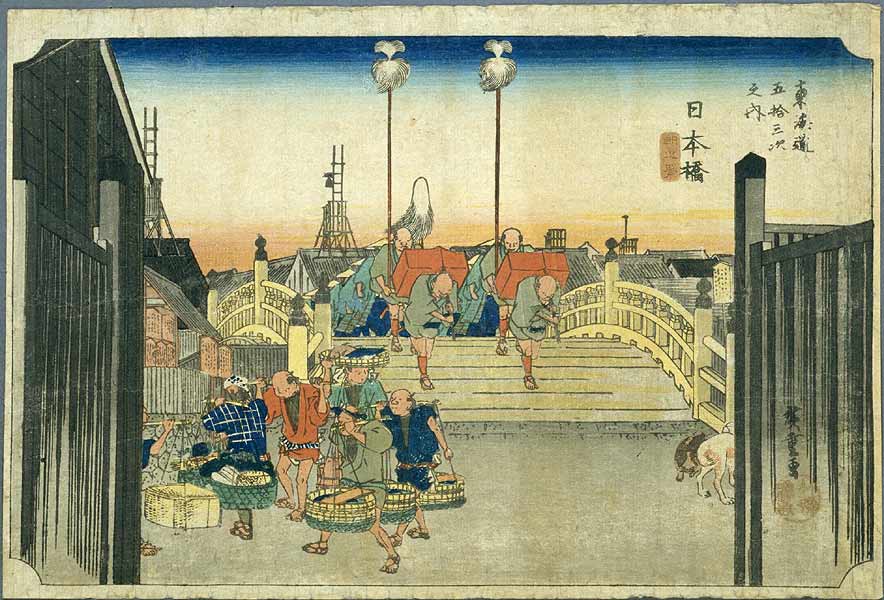Continuing from my first article, this is the second in a series of columns about Japan Inc.’s ultimate global challenge: marketing. Following are the six reasons I believe Japanese companies struggle with marketing.
1. Language
In the Japanese language, there is no direct translation for the word or concept of Marketing. It is spelled phonetically via five katakana characters (separate alphabet for foreign words): Ma-Ke-Ti-N-Gu. The word marketing contains the word market, and this is where the confusion is believed to come from.

The English word market has been assimilated into the Japanese language and communicates a place to shop or to make a sale. When the Japanese hear the word marketing; they appear befuddled as their ears hear only market, the ing has no meaning. The mind jumps to a sales transaction taking place in a market.
This is one reason why, in Japanese companies, sales and marketing are connected together as if they are the same function. Sales activities represent 80-90 percent of their efforts; marketing is limited to actions to support sales.
The Japanese language is brilliant for negotiating intricate social relationships, preserving nuances and saving face. It is not known for clarifying thoughts or fostering open and honest debate, which tough marketing decisions require.
2. Cultural History
Monozukuri, Mono (thing) and Zukuri (process of creating, producing, manufacturing with a high level of craftsmanship), is a relatively new Japanese word. It combines the desire to produce excellent products with the ability to constantly improve productions systems and processes. This underpins the Japanese business economy. The drivers of monozukuri and business direction are the product engineers. Marketing staff have a lower status in the organization.

This ties back to the Tokugawa shogunate government, which intentionally created a social order called the four divisions of society (Shi-no-ko-sho) that stabilized the country in the Edo period (1603-1868). Classes were arranged by what Confucian philosophers described as moral purity.
- Samurai (shi) are at the top of society because they set a high moral example for others to follow.
- Farming peasants (nō) come second because they produce the most important commodity, food. According to Confucian philosophy, society could not survive without agriculture.
- Craftsmen (kō) are producers of material goods.
- Merchants (shō) are at the bottom because they generate wealth without producing any goods.
In today’s corporate Japan, this caste system continues: engineers are the samurai, factory workers are the farmers, suppliers are the artisans and craftsmen, and sales and marketing staff are the merchants.
3. Education
Marketing is taught based on its operational and theoretical applications in Japanese universities; not from the strategic or emotional side of marketing that manages brands. It is not a major or field of career specialization. University professors do not have professional, practical experience in marketing compared to some professors in American or European universities where marketing is offered as a major for career specialization at the undergraduate and MBA levels. Japanese companies do not have marketing training programs.
4. Talent Management
Employees can be rotated at some point through the marketing department during their career; it is not an area of career specialization. When employees are placed in a marketing position, they have to figure it out on-the-job, and it does not matter what their level or rank is. They do not have mentors or knowledgeable managers to guide them.
There can be an overreliance on outside suppliers to help, such as the advertising agency to help them fulfill their assignments. Experience gained is rarely retained and passed on to the next person rotated in to fill the position. Aptitude for a marketing position is not a consideration. Executives and staff in marketing positions have not had basic training in the fundamentals of marketing.

Marketing is not represented at the board level as a core function of the business; the CEO does not always appear to be directly involved in the company’s marketing. In today’s highly competitive war-like marketplace, marketing is too critical to be left to middle-level generalists as a tactical function to support sales.
Since marketing is not considered a core function of the business, management does not want to undermine their departmental employees in a bottom-up organization; they want to give them full responsibility. This feeds a perpetual cycle of marketing mediocrity. That results in tremendous inefficiencies, poor accountability and measurements, and continuing to do what has always been done in the past. In Japan, no one wants to risk being first; going second is more comfortable as someone has cleared the path.
5. Lack of Incentives
There is no incentive or reward to try something new and different. There is a fear of change: it is better to imitate or continue with the status quo. Ringisho or nemawashi ensures bold strategies are rarely pursued.
Ringisho: High-level formal authorization/approval process.
There is a preference in Japanese culture for consensus and harmony. If anyone dares to risk trying something new or different and it does not work, they will most likely be punished or even black-listed, possibly bringing an end to their career. There is no sense of professionalism or pride in output.
6. Tactics vs. Strategy
Japan’s approach to marketing has followed these tactics:
- growth at the expense of profitability
- proliferation of products and features
- continuous operational improvement confused with strategy (a means to an end)
- serve all market segments
- sell through multiple channels (everywhere)
- emulate competitive approaches and the customer is God. This means every customer is equally important no matter how much they spend!
- understanding and articulating what a brand is and how it should be managed is a mystery.
To compete on strategy, Japan has to learn to compete applying unique positioning involving a distinct product offering, achieving operational effectiveness and differentiation, and performing the same or similar activities better than competitors. Everything must be measured and requires real innovation (not just quality improvements). Making tradeoffs and choosing what not to do require constant discipline and clear communication to guide the organization.
Finally, Japan needs to move beyond just quality competition to competing on quality and innovation. Genuine innovation not only in products, but also in approaches to competing is required, e.g. marketing.
How Japanese companies struggle with marketing
Here is an example of how Sony failed at both innovation and marketing: Apple iPod vs the Japanese Electronic Company’s Easy Carry XVZ-22R.
When Sony’s Akio Morita directed his engineers to create the Walkman in 1979, he launched a revolution in the way people listen to music. A little over 20 years later, Apple founder Steve Jobs reinvented the portable music player with the innovative iPod.
Jobs launched his game-changing product with the slogan: “iPod. One-thousand songs in your pocket.”
 In one simple phrase, Mr. Jobs also told us why we wanted the iPod! The Apple brand had already conditioned us to Think Different and believe anything from Apple had a cool factor to it. Up until the iPod launch, Apple was just a computer company. Consumers easily accepted a personal music player from this computer company. Apple backed up the iPod with the iTunes store so we could load it with songs at a reasonable price immediately. Consumers ran out and bought it; technical details, features and price were secondary considerations.
In one simple phrase, Mr. Jobs also told us why we wanted the iPod! The Apple brand had already conditioned us to Think Different and believe anything from Apple had a cool factor to it. Up until the iPod launch, Apple was just a computer company. Consumers easily accepted a personal music player from this computer company. Apple backed up the iPod with the iTunes store so we could load it with songs at a reasonable price immediately. Consumers ran out and bought it; technical details, features and price were secondary considerations.
I imagine a Japanese electronics company, having invented the same product, might have presented it something like this:
“Today we are introducing a new, portable music player called the Easy-Carry XVZ-22R. It weighs a mere 6.5 ounces, is about the size of a shirt pocket, and boasts voluminous digital capacity, long battery life, and lightning-fast transfer speeds. We will be introducing many variations of the Easy-Carry XVZ-22R that incorporate different functions and feature different colors.”
The Japanese company (probably the engineer who developed it) presenting the Easy-Carry XVZ-22R as a competitive response only told us what it did and how. There was no emotional connection or reason for us to believe it was a better product at a lower price that could also download songs via the Internet. The brand making it had a reputation for high quality, reliable products. A piece of hardware that inspired no one working on its marketing nor the consumer.
Steve Jobs, through a simple single phrase, established the key benefit; he did not speak to consumers like an engineer with lots of technical terms and statistics. Apple has since taken Japan by storm with the iPhone and iPad. Meanwhile, Sony (and many other Japanese electronics companies), in the post-Morita era, is struggling to figure out its future; especially in the audio-visual field on which it built its global brand reputation.
My next column will focus on establishing a dedicated marketing function inside Japanese companies.



No comments yet.